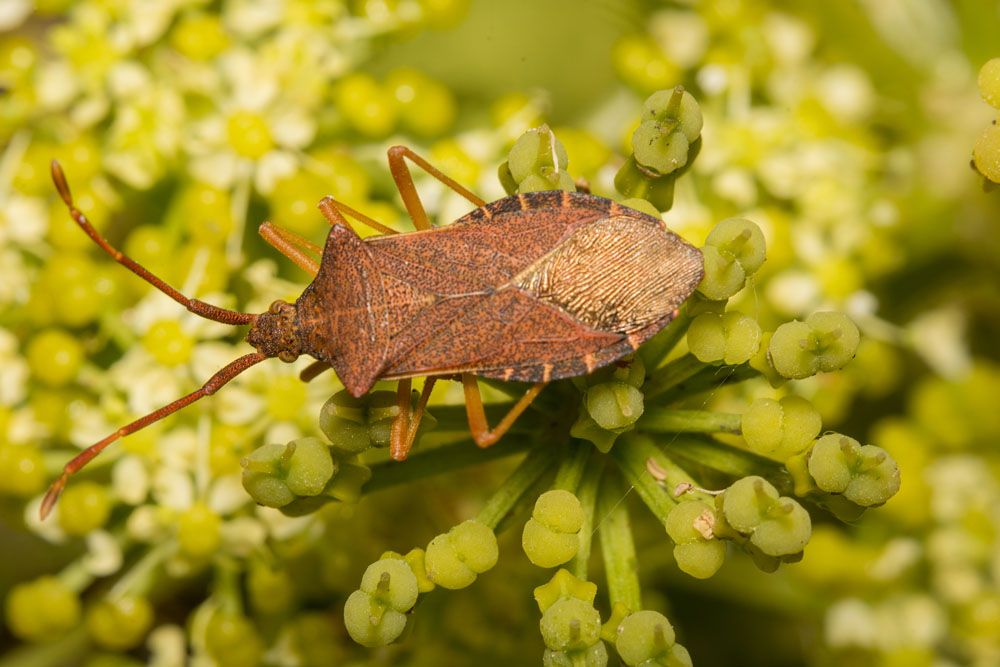
Horned Squash Bug – Anasa armigera
Horned Squash Bug (Anasa armigera)
Common Name: Horned Squash Bug
Latin Name: Anasa armigera
Appearance:
Eggs:
The eggs are 1.5 mm large and shiny golden/brown and often placed in clusters beneath leaves or stems.
Nymphs:
Nymphs are 2.5 to 10mm long, pale in colour, with black and white legs. The eyes are reddish, and the antennae are black.
Adults:
Adults are 12mm to 16mm long, with two little horns at the base of each antenna. Antenna tips are orange, followed by black and off. -white spatterns.
Black patches on the legs – Black/dark brown and off-white patterns around the “shield” borders. Hemelytra forewing (shaped like an “x”)
Host plant:
Plants for pumpkins, cucumbers, melon, squash, and other vine crops are host plants.
Territory:
It is found in North America.
Damages caused by Horned Squash Bug:
Even though the horned squash bug is less prevalent than the original squash bug, their harm is similar since they feast on the leaves of numerous plants. They suck out plant sap with their piercing-sucking mouthparts while inserting a poison back into the plant; this toxin causes wilting, crunchy leaves, and necrosis around the margins of leaves. The damage is most severe at the start of the growing season and might result in substantial economic loss.
Life history and habits:
The eggs are placed over many weeks, frequently at the angles produced by the leaf veins, and the hatching process takes between one and two weeks. There are five stages of nymphs before new adults are created, and each stage takes between four and six weeks to complete. Adults spend the winter indoors or in leaf litter or field debris; they do not emerge to lay eggs until April or May. After 10 days, the nymphal stage begins, and after another 35–40 days, the adult stage has been reached. In Michigan, squash bugs only have one generation every year, although all phases of their life cycle can be seen at any point throughout the growing season.
